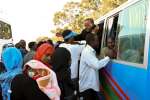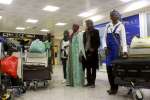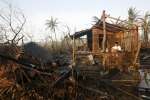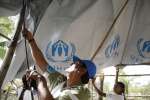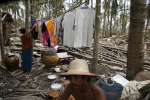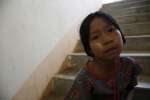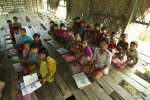- Text size
 |
|  |
|  |
| 
- Français
Thailand: Resettlement of Myanmar refugees hits 50,000 mark
Briefing Notes, 30 June 2009
This is a summary of what was said by UNHCR spokesperson William Spindler – to whom quoted text may be attributed – at the press briefing, on 30 June 2009, at the Palais des Nations in Geneva.
The world's largest resettlement program today passed a new milestone when the 50,000th Myanmar refugee left a camp in Thailand to begin a new life in the United States. Resettlement from the nine refugee camps along the Thai-Myanmar border has been going on since 2004, but got an enormous boost in early 2005 when the United States made a very generous offer to give new homes to refugees from the camps.
For refugees around the world, return to their home country is usually the preferred option. But these refugees, most of whom have been in Thailand for more than 20 years, see little realistic prospect of returning to Myanmar any time soon. They also are not able to settle permanently in Thailand.
So for them, resettlement in a third country is the best option. For this reason we are very grateful to countries like the United States, Canada, Australia, Finland, the Netherlands, New Zealand, Norway and Sweden for offering refugees a chance to begin new lives.
The man who was precisely the 50,000th person to depart is an ethnic Karenni school teacher who had been in Ban Mai Nai Soi refugee camp in Mae Hong Son province in northern Thailand since 1996. He and his wife and 2-year-old daughter left Bangkok this morning at the start of a 28-hour plane journey – their first time on a plane – that will bring them to their new home in Camden, New Jersey.
The man, Plu Reh, who had taught primary school in the camp, spoke optimistically to our staff about the opportunities in the United States for a good education for his daughter and for further education for himself and his wife.
Some 112,000 registered Myanmar refugees remain in the nine camps along the Thai-Myanmar border. UNHCR expects to resettle a further 6,000 to 7,000 of them this year.



